The Seven Exoduses of Kashmiri Pandits…
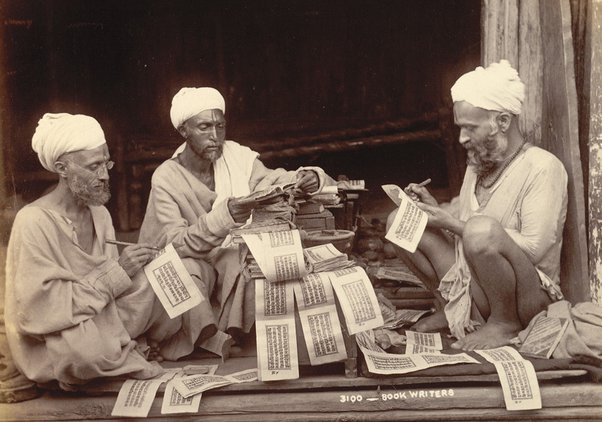

Jan 19, 1990 – This day is observed to keep alive the memory of the genocide of Kashmiri Hindus (Pandits). In fact, the memory and attitude of us Hindus are very seasonal, so it is necessary that the stories of their escape, destruction, defeat, cowardice and stupidity should be reminded again and again to the Hindus. There have been 7 exodus till date in Kashmir. Read on to know more.
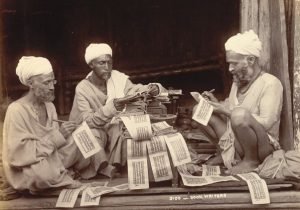
This is the day from which Kashmiri Muslims, following the Islamic teachings and character sincerely, started the orgy of killing, raping, looting, arson of Kashmiri Hindus. As a culmination of this horror, the process of exodus of Kashmiri Hindus from the Valley of Kashmir over the centuries was completed. In this bloody genocide with the silence of the central government and the implicit support of the government of Jammu and Kashmir, Kashmiri Hindus who could not leave the valley were killed by Kashmiri Muslims.
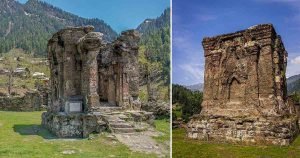
Kashmiri Pandit community has suffered enough wrath of being minority in a Muslim Majority state. Kashmir used to be fully Hindu state, no Muslim. When Islam grew in Africa and eventually Islamic preachers came to Kashmir too. Kashmiri Pandit community being a Hindu community respects every religions and akin to this, they welcomed Muslims with open arms and called them brothers. But with the rising influence of Islam, Kashmir witnessed a demographic change in it. And, large groups of Muslims started Ransacking local communities and during the Afghan and then the Mughal rulers in India gave long rope to Muslims to get Pandits converted forcefully. Pandit community suffered exodus 7 times during these history unfolding. There have been seven exoduses of Kashmiri Pandits throughout history about which many people are still unaware.
THE FIRST KASHMIRI PANDIT EXODUS (1389–1413)
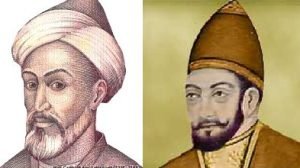
This 19 January 1990 is an epilogue to a story that began in the 14th century, when Kashmiri Pandits had to flee Kashmir for the first time. In that period, a Syed Mir Ali Hamdani, who was tortured by Timur Lang, reached Kashmir with 700 of his followers to escape. He first explained the true meaning of infidels to Islam to the minority Muslims there and, influencing Sultan Qutubuddin, made it a part of the state policy to torture and torture Kashmiri Hindus. During this regime based on bigotry, hatred, distrust and intolerance, it was the official policy of the state to prosecute and massacre Hindus who did not accept Islam. To avoid this, the first series of Kashmiri Hindus left the valley of Kashmir and migrated to other states and the Kashmiri historian gives the name of The First Exodus (1389–1413).
It all started in the 14th century.
Shah Mir, the first Muslim invader, who started to rule Kashmir in 1339 AD converted many Kashmiri Pandits to Islam through violent means. He destroyed our temples and ruined our heritage and culture.
Shah Mir was soon followed by Taimur – The Lame, he drove a huge wedge between majority hindus and minority muslims. Infact, he made a law to persecute Kashmiri Pandits.
Following him, came Sultan Sikandar. He forced many Kashmiri Pandits to convert to Islam, desecrating many hindu temples and murdering the ones who opposed. In order to preserve the precious hindu culture and traditions, many Kashmiri Pandits had to fled their homes.
THE SECOND KASHMIRI PANDIT EXODUS (1506-1585)
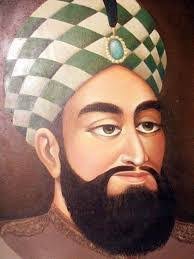
The second Kashmiri Pandit Exodus lasted from 1506 AD to 1585 AD.
During the second exodus, the “Chaks” came into power. “Chaks” were a group which had become a part of the army of Shah Mir. Chaks crushed their political rivals by murders and conspiracies. They were no less ruthless than the rulers who had come before them.
Fattah Khan from 1506 AD to 1516 AD with Shah Mir’s chaks demolished many hindu places of worship and tried to remove all traces of infidelity and idol worship from Kashmir. This was also known as the “Dark Ages” or “Dark Period” in the history of Kashmir because it was the ruthless era of the “Chaks”.
The chaks were actually Shia muslims, whereas the ones who ruled before them were Sunni muslims. They like the others forcibly converted many Brahmin families to Islam.
Some Kashmiri Pandits sent a plea to the chaks, but they ruthlessly threw them in jail. They persecuted 950 Kashmiri Pandits every day. In order to convert the remaining hindus, they forced them to consume beef. Moreover, thousands of cows were slaughtered every week because the rulers knew that hindus worship the cows.
As a result of this, of all the violence and of all the punishments for being hindus, there was a massive exodus where many Kashmiri Pandits once again fled to never return.
In this way, Kashmiri Hindus have been migrating due to these reasons in different periods of history. Those who stayed, either converted at the tip of the sword and accepted Islam and the rest were put to death. In this sequence, the second migration started from the time of Shah Mir when he established Sultanate Kashmir. It has been called The Second Exodus (1506-1585).
THE THIRD KASHMIRI PANDIT EXODUS (1585-1753)
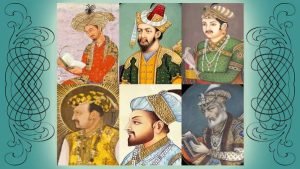
Now came the third exodus under the Mughal Empire from 1585 AD to 1753 AD.
It all started with Akbar The Great, who was known for being a very humane and liberal emperor. Akbar embraced the idea of letting different religions coexist and allowed Kashmiri Pandits to come back into Kashmir and worship their religion freely.
Just when the Kashmiri Pandits started to feel back at home in their own homeland of Kashmir, came his son Jahangir Khan, who did not believe in the same religious tolerance that Akbar had believed in. With Jahangir, Shah Jahan and Aurangzeb were also interested in the torture and mass extermination of Kashmiri Pandits.
Aurangzeb, one of the most ruthless leaders immediately acted upon converting all of India to islam including Kashmiri Pandits. The first step that Aurangzeb did was to exterminate all hindu scholars because he believed they will slow down to process of conversion. Thousands of Kashmiri Pandits were converted to Islam or had to move to neighboring states to continue practicing hinduism.
As you can see the overall trend of all the exoduses were that certain muslim leaders came into power and as a result crushed the Kashmiri Pandit’s culture by either forcefully converting them to Islam, killing them or leaving them with no option other than to flee their beloved homes.
This took place during the Mughal period when Jahangir, Shahanshah and then finally Aurangzeb made the Islamization of Kashmir the focal point. The exodus during that period is called The Third Exodus (1585-1753).
This trend continues in the fourth, fifth, sixth and seventh exoduses.
THE FOURTH EXODUS OF KASHMIRI PANDITS (1753)
Now comes the fourth exodus of Kashmiri Pandits.
In 1753, which was under the rule of the Afghan governors. The leaders continued the mass extermination of Kashmiri Pandits which led the Kashmiri Pandits to once again flee the safety of their homes to Kabul.
Kashmiri Pandits were physically tortured in the most ruthless fashion and had to suffer much emotional and spiritual anguish.
The barbarous Afghans employed every wild, inhuman, primitive, ferocious, cruel and brutal method to suppress the Kashmiri Brahmans. A pitcher filled with ordure was placed on the head of a Pandit and stones were pelt on it, till it broke and the unfortunate Brahman become wet with filth. Their brutality and atrocity crossed the extreme limits when Hindus were tied up in grass sacks, two and two, and drowned in the Dal Lake. The victimized Hindu were forced to flee the country or were killed or converted to Islam. There was horrible mass exodus of the Kashmiri Pandits, sixth one, to far away places like Delhi, Allahabad, etc. Many covered the long distances on foot.
Hindu parents destroyed the beauty of their daughters by shaving their heads or cutting their noses and ears to save them from degradation. Any Muslim could jump on the back of a Pandit and take a ride. Mir Hazar – an Afghan governor, used leather bags instead of grass sacks for the drowning of Brahmans. Turbans and shoes were forbidden for them. The Saraswat Brahmans of Kashmir were also forced to grow beards and tilak was interdicted. The Afghans are now only remembered for their barbarity, brutality, ferocity, tyranny and cruelty. They thought no more of cutting of heads than of plucking a flower.
This took place in 1753 when after the repressive rule of Fakirullah, his vampire son Faizal came and Kashmiri Hindus had to flee the massacre by him, which has been called The Fourth Exodus.
The fourth exodus came to an end when the Sikhs finally captured Kashmir, ending the rule of the ruthless Afghan governors and bringing a little bit more peace.
THE FIFTH EXODUS OF KASHMIRI PANDITS (1948)
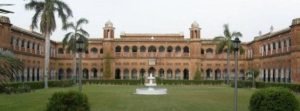
Now came the fifth exodus of Kashmiri Pandits which took place in the early 1900’s. Due to Pandit Birbal Dhar, Maharaja Ranjit Singh was able to re-establish a hindu government in the Jammu and Kashmir State after the Sikhs took over. This was a period were all religions were able to coexist in harmony.
Many muslim rulers in India started rising up and forming an organization, which was later known as the Muslims Leading Room.
They were annoyed that educated Kashmiri Pandits lived comfortable lives and held high positions in the government. As a result, on July 13, 1931, later known as Black Day was a grave day for all Kashmiri Pandits.
Kashmiri Muslims looted and murdered many people and properties in Srinagar. As a result, after this the Dogra rulers came into power, and Kashmiri Pandits no longer had any rights.
After Independence was granted to India from the British, even though the entirety of the nation was celebrating the victory of independence, Kashmiri Pandits were unable to do so because Pakistan launched an attack on Kashmir.
Once again, thousands of Kashmiri Pandits had to leave their homes to seek refuge in Srinagar.
The post-independence period in Jammu and Kashmir led to an unmistakably slow and steady exodus of the Kashmiri Pandit Community, and this was primarily due to the fact that Kashmiri Pandits simply had no rights, privileges or opportunities anymore in Kashmir.
In the 20/30s of the 20th century, Muslim youths who returned from Aligarh Muslim University during the reign of Maharaj Hari Singh once again started an anti-Hindu movement by marking Kashmiri Pandits in the name of freedom of Muslims, as a result of which on 13 July In 1931, the anarchists of the Muslim Reading Room Party started looting the properties of Hindus and killing the Hindus of Kashmir. After that, talking about Muslim interests, Sheikh Abdullah of the Muslim National Conference jumped in and created a completely anti-Hindu atmosphere by raising the slogan Islam is in danger under the guise of protesting against Maharaj Hari Singh.
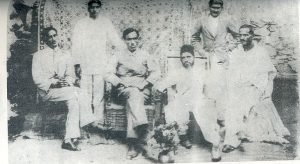
Sheikh Abdullah had full support of the Congress because of the British rule and the personal influence of Jawaharlal Nehru. Due to this the anti-Hindu policies of Sheikh Abdullah were ignored. As a result, when India was partitioned and Pakistan was formed, the situation in Kashmir had become unusual. Ever since the formation of Pakistan, Kashmir had a plan to become a part of Pakistan in the name of Islam and for that it was infiltrated by tribals who looted and killed Hindus on a large scale. As a result, millions of Kashmiri Hindus migrated from North, Northwest and Northeast Kashmir, which is called The Fifth Exodus.
As horrifying as the event of the fifth exodus were, they pale in comparison to the events of sixth and seventh exoduses.
THE SIXTH EXODUS OF KASHMIRI PANDITS (1986)
During the sixth exodus, the ruling of Gul Shah was one of the worst as there were the most amount of curfew days ever. Gul Shah was eventually nicknamed “Gul Curfew” because of this.
A number of Kashmiri Pandits protested resulting in lots of violence, the destruction of temples by muslims, because of this, the Kashmiri Pandits understood two things: Kashmir has only become a land for Kashmiri Muslims and was no longer safe for the Kashmiri Pandits and that too, the peaceful insights that Mahatma Gandhi showed India were unfortunately very short-lived in Kashmir.
The reason for the situation as it is today was the toppling of Farooq Abdullah’s government in 1984, by his brother-in-law Ghulam Muhammad Shah, with the support of the Congress, becoming the Chief Minister of Jammu and Kashmir.

He considered himself a staunch Muslim, not considering himself to be secular. Corruption was at its peak during Shah’s tenure and he lost control of both his Islamic bureaucracy and the police. The construction of Shah Masjid inside the Jammu Secretariat by him and then the massive demonstration against Shah in Jammu against him started a period of massacre and looting against Hindus from February 1986, which was supported by the administrative machinery of Srinagar. The riots against Hindus first started on the bed of Ghulam Muhammad Shah, in which later Congress President and later Home Minister Mufti Muhammad Sayeed also jumped. His anti-Hindu fanatic supporters set fire to South Kashmir.
Two things were clear from the anarchy of 1986, Kashmiriyat is spinning in the name of secularism in which there is no place for Hindus and secondly that all the systems of Kashmir have been Islamized so that now only Muslims can live there and Hindus live there, Muslims are not tolerated. Due to the indifference of the secular intellectuals with the state and central government, this time the Kashmiri Hindus have once again lost their lives.
THE SEVENTH EXODUS OF KASHMIRI PANDITS (1990)
What could not have happened in about 500 years has happened in less than 50 years in independent secular India. The only thing to understand here is that for fundamentalist Islam, all of you are Kashmiri Pandits and history does not present any such example where the Hindus of the Valley of Kashmir have come out on the streets and retaliated against the Muslims.
Now for the seventh and final exodus of Kashmiri Pandits, which is ongoing and has never actually officially ended. More than 350,000 Kashmiri Pandits fled in 1990, leaving behind everything they had, believing in a culture that was more than 5000 years old.
Brainwashing and instigating the Kashmiri Muslim Youth, Pakistan laid a trap of making Kashmir independent and thus resulting in lots of violence.
Slogans like these began :
“Zalimo, O Kafiro, Kashmir harmara chod do” (O! Merciless, O! Kafirs leave our Kashmir);
“Kashmir mein agar rehna hai, Allah-ho-Akbar kahna hoga” (Any one wanting to live in Kashmir will have to convert to Islam);
“La Sharqia la gharbia, Islamia! Islamia!” (From East to West, there will be only Islam);
“Musalmano jago, Kafiro bhago” (O! Muslims, Arise, O! Kafirs, scoot);
“Islam hamara maqsad hai, Quran hamara dasturhai, jehad hamara Rasta hai” (Islam is our objective, Q’uran is our constitution, Jehad is our way of our life);
“Kashmir banega Pakistan” (Kashmir will become Pakistan);
“Kashir banawon Pakistan, Bataw varaie, Batneiwsaan” (We will turn Kashmir into Pakistan alongwith Kashmiri Pandit women, but without their men folk);
“Pakistan se kya Rishta? La Ilah-e- Illalah” (Islam defines our relationship with Pakistan);
“Dil mein rakho Allah ka khauf; Hath mein rakho Kalashnikov” (With fear of Allah ruling your hearts, wield a Kalashnikov);
“Yahan kya chalega, Nizam-e- Mustafa” (We want to be ruled under Shari’ah);
“People’s League ka kya paigam, Fateh, Azadi aurIslam” (What is the message of People’s League? Victory,Freedom and Islam).
The final assault on the Kashmiri Pandits started with these slogans. Barbarous terrorists from Pakistan, Afghanistan, Turkey, Sudan and even Saudi Arabia penetrated into the Saffron Valley. On Jan, 04, 1990, a local Urdu newspaper, Aftab, published a press release issued by Hizb-ul-Mujahideen, asking all Pandits to leave the Valley immediately.
Al Safa, another local daily repeated the warning.These warnings were followed by Kalashnikov-wielding masked terrorists carrying out military-type marches openly. Reports of killing Kashmiri Pandits continued to pour in. Bomb explosions and sporadic firing by militants became a daily occurrence.
Explosive and inflammatory speeches being broadcast from the public address systems of the mosques became frequent. Thousands of audio cassettes, carrying similar propaganda, were played at numerous places in the Valley, in order to instill fear into the already terrified Kashmiri Pandit community.
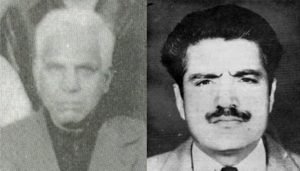
The period of terror that started in Kashmir with the killing of BJP’s state vice-president Tikku Lal Taplu on September 14, 1989, got worse with time. A month after Tikku’s murder, retired sessions judge Neelkanth Ganju, who sentenced Jammu and Kashmir Liberation Front leader Maqbool Butt to death, was assassinated.

Then terror reached its zenith on 13 February 90 with the brutal murder of Lasa Kaul, director of the television center in Srinagar. This terror which started in the valley made religion its weapon and Kashmiri Pandits came under its target. At that time only Kashmiri Pandits were the target of terrorists. They wanted to kill all the Pandits at any cost or throw them out of the valley, in this they succeeded.
Under the cover of terror, this had started long back but what happened on January 19, 90 was the final nail in the coffin. Calls started coming to the houses of the Pandits from a few days ago that they should leave the valley as soon as possible or be ready to die. Posters had become common outside homes advising pundits to leave the valley as soon as possible or be prepared to face the consequences. People were being ordered to set their clocks with Pakistani time. There was a ban on applying vermilion. There was talk of adopting Pakistani currency except Indian currency.
Mosques whose loudspeakers once used to hear the voice of prayer, today poison is being spewed for Kashmiri Pandits. These loudspeakers kept on making similar announcements for three consecutive days. ‘What will happen here, Nizam-e-Mustafa’, ‘What is the meaning of freedom’, ‘If you want to stay in Kashmir, Allah-o-Akbar has to say’ and ‘Assi gachi Pakistan, tell roas te batanev san’ which means It meant that we have to make our own Pakistan here, with Kashmiri Pandit women but without Kashmiri Pandits. During that time there was a curfew, yet the fundamentalists came out on the streets defying the curfew. The killing of Kashmiri Pandits, raping their sisters and daughters and driving them out of the Valley forever had begun. Finally, on January 19, 1990, the remaining three lakh Kashmiri Pandits were forced to leave the valley indefinitely, leaving everything behind.
Recalling these events, the former Director General of Jammu and Kashmir Police, M M Khajooria says, “The mischief of the summer of 1989 started with serving notice to the prominent members of the minority community to quit Kashmir.The letter said, ‘We order you to leave Kashmir immediately, otherwise your children will be harmed- we are not scaring you but this land is only for Muslims, and is the land of Allah. Sikhs and Hindus cannot stay here’. The threatening note ended with a warning, ‘If you do not obey, we will start with your children. Kashmir Liberation,Zindabad.” They signaled the implementation of their intentions quite blatantly. M. L. Bhan of Khonmoh, Srinagar, a government employee, was killed on Jan 15, 1990. Baldev Raj Dutta, an operator in Lal Chowk,Srinagar, was kidnapped on the same day. His deadbody was found four days later, on Jan 19, 1990, at Nai Sarak, Srinagar.
The body bore tell-tale marks of brutal torture. The terrific night of Jan, 19, 1990, witnessed macabre happenings, the like of which had not been witnessed by Kashmiri Pandits after the Afghan rule.Those that experienced the fear of that night are unlikely to forget it in their life time. For future generations, it will be a constant reminder of the brutality of Islamic radicals, who had chosen the timing very carefully. Farooq Abdullah, whose government had all but seized to exist, resigned. Jagmohan took over the charge of the Governor just the previous night at Jammu. The curfew was imposed to restore some semblance oforder, it had little effect. The mosque pulpits continued to be used to exhort people to defy curfew and join so-called ‘Jehad’ against the Pandits. Armed cadres of JKLF marched through the streets of the Valley to terrorise the minorities – Hindus and Sikhs. As the night fell, the microscopic community of Kashmiri Pandits became panic-stricken when the Valley began reverberating with the war-cries of Islamists, who had stage-managed the whole event with great care; choosing its timing and the slogans to be used. A host of highly provocative, communal and threatening slogans, interspersed with martial songs, incited the Muslims to come out on the streets and break the chains of ‘slavery’. These exhortations urged the faithful to give a final push to the Kafir in order to ring in the true Islamic order. These slogans were mixed with precise and unambiguous threats to Pandits.They were presented with three choices — Ralive, Tsaliv yaGalive (convert to Islam, leave the place or prish).Tens of thousands of Kashmiri Muslims poured into the streets of the Valley, shouting ‘death to India’and death to Kafirs.These slogans, broadcast from the loud-speakers of every mosque, numbering roughly 1100, exhorted the hysterical mobs to embark on Jehad the religious war against the ‘non-believers’. All male Muslims, including their children and the aged,wanted to be seen to be participating in this Jehad.Those who had organized such a show of force in the middle of a cold winter night, had only one objective; to put the fear of death into the hearts of the already frightened Pandits. In this moment of collective hysteria, gone was the facade of secular, tolerant, cultured, peaceful and educated outlook of Kashmiri Muslims, which the Indian intelligentsia and the liberal media had made them to wear for their own reasons.
Most of the Kashmiri Muslims behaved as if they did not know who the Pandits were. This frenzied mass hysteria went on till Kashmiri Pandits’ despondency turned into desperation, as the night wore itself out. For the first time after independence of India from the British rule, Kashmiri Pandits found themselves abandoned to their fate, stranded in their own homes, encircled by rampaging mobs. Through the frenzied shouts and blood-curdling sloganeering of the assembled mobs, Pandits saw the true face of intolerant and radical Islam. It represented the complete antithesis of the over-rated ethos of Kashmiriyat that was supposed to define Kashmiri ethos.The pusillanimous Central Government was caught napping and its agencies in the State, particularly the army and other para military forces, did not consider it necessary to intervene, in the absence of any orders.
The State Government had been so extensively subverted that the skeleton staff of the administration at Srinagar (the winter capital of the State had shifted to Jammu in November 1989)decided not to confront the huge mobs. Delhi was too far away, anyway. Hundreds of Kashmiri Pandits phoned everyone in authority at Jammu, Srinagar and Delhi, to save them from the sure catastrophe that awaited them.The pleadings for help were incessant. But not a soldier came to their rescue. Therefore, Kashmiri Pandits found best protection in huddling together indoors, frozen with fear, praying for the night to pass. The foreboding of the impending doom was too over-powering to let them have even a wink of sleep.The Pandits could see the writing on the wall. If they were lucky enough to see the night through,they would have to vacate the place before they met the same fate as Tikka Lal Taploo and many others. The Seventh Exodus was surely staring them in the face. By morning, it became apparent to Pandits that Kashmiri Muslims had decided to throw them out from the Valley. Broadcasting vicious Jehadi sermons and revolutionary songs,interspersed with blood curdling shouts and shrieks, threatening Kashmiri Pandits with direconsequences, became a routine ‘Mantra’ of the Muslims of the Valley, to force them to flee from Kashmir.
Wall posters in fairly large letters, proclaiming Kashmir as ‘Islamic Republic of Kashmir’, became a common sight in the entire Valley. So were the big and prominent advertisements in local dailies, proclaiming their intent: ‘Aim of the present struggle is the supremacy of Islam in Kashmir, in all walks of life and nothing else. Any one who puts a hurdle in our way will be annihilated’. Press release of Hizb-ul-Mujahideen (HM) published in the morning edition of Urdu Daily ‘Aftab’ of April, 01, 1990: ‘Kashmiri Pandits responsible for duress against Muslims should leave the Valley within two days’. Head lines of Urdu Daily, Al Safa, of April, 14, 1990: ‘With Kalashnikov in one hand and Quran in the other the Mujahids are openly roaming the streets singing the Tarana-e- Kashmir.’ Brutal, wild and barbarous techniques were employed to hound and kill the Aryan Saraswat Brahmans of Kashmir.
Even the helpless ladies were not spared. Sarla Bhat, a nurse in Soura Medical Institute, was abducted on 19th April, 1990, by JKLF militants who repeatedly gang-raped her and eventually killed her on 25th April. Girja Tikoo, a teacher from Bandipur, was kidnapped, raped and eventually shred to pieces by a saw mill on 4th June, 1990. Bimla Braroo from the Nai Sarak, Srinagar, who along with her daughter, Archana, was raped in the presence of her husband, Sohanlal, before all the three were killed on 31st March, 1992. There are dozens of such brutal instances. Even wicked Afghans will be feeling sorry in their graves for the sanatic holocaust of the legendary Kashmiri Pandits. Governor Jagmohan, had written a detailed letter to the former Prime Minister, Rajiv Gandhi , on April 21,1990, endorsing the alarming signals. But cowardly Indian leadership was still unconcerned. The barbarous murder of hundreds of innocent Brahmans of Kashmir caused their seventh and final agonizing mass exodus from the Valley.
This was the final knock down of ethnic cleansing and genocide of the Kashmiri Pandits. The mass massacres at Sangrampora (1997), Udhampore (1997), Prankot (1998), Wandhama (1998) and Nadimarg (2003) were the follow up cleansing operations. Pandits in Kashmir dwindled from 10% in 1947 to fewer than 5% in 1989 and to less than 1/2 to 1% today.
Kashmiri Pandits are now abandoned and forbidden, causing the death of a great saraswat-vedic civilization.
The struggle continues for the thousands of Kashmiri Pandits all over the world.

DISCLAIMER: The author is solely responsible for the views expressed in this article. The author carries the responsibility for citing and/or licensing of images utilized within the text.
